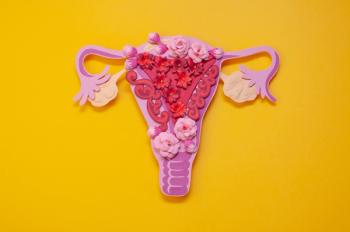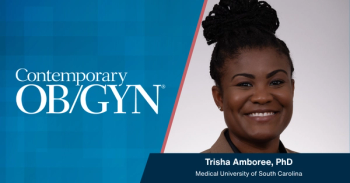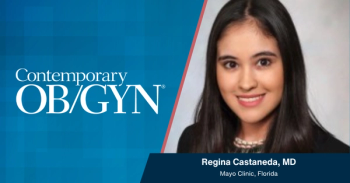
Operating Room Use of the 5mm Olympus Endoeye
OBGYN.net Conference CoverageFrom the 31st Annual Meeting of the American Association of Gynecological Laparoscopists (AAGL)
Daniel Tsin, MD: Hi, today we are at the Olympus at the AAGL and with me is Dr Karen Abbott from San Carlos, California. Dr Abbott is a well-known laparoscopist and has extensive experience in the procedures that are limited to smaller portals than 10mm and removing the risk of development of the larger scars, that is a tendency in our field. What would you like to tell me about this little fabulous medical device?
Karen Abbott, MD: Well, the 5mm device is outstanding because not only do you get the light, but you also get the object of the 10mm with half the weight or less, so not only do you get excellent visibility and small scars, but your assistant surgeon doesn’t whine so much because it’s not so heavy over long cases.
Daniel Tsin, MD: I have heard this device is not only light but also has a couple of features. Would you like to explain?
Karen Abbott, MD: Sure, there’s an automatic light balance, there’s an automatic focus and then there’s a zoom, so you can have a great time with this thing and it’s wonderful when you come to editing because you can do both close-ups and overview pictures.
Daniel Tsin, MD: So actually you zoom in and zoom out just with the press of the button, rather than the older method.
Karen Abbott, MD: Oh, I know, you had to sit there fiddling with the dial.
Daniel Tsin, MD: That’s very nice. But probably I would say there’s something that sets you apart, it’s how many procedures, what kinds of procedures you can do just with 5mm rather than the 10mm?
Karen Abbott, MD: Actually, you can do any procedure using the 5mm that you can with the 10mm because you get as much light and as excellent optics with this as you do a 10mm, in fact, probably better. And you can get into places a 10mm could never get because it’s so small, so it’s wonderful for work in the cul-de-sac or over in the ovarian process because you can get right up under the tube or ovaries and be able to work with direct contact. It’s fabulous.
Daniel Tsin, MD: How is the light?
Karen Abbott, MD: The light’s excellent. The only time we’ve had problems is when we’re dealing with uteruses in excess of 1,000 grams, then if you do a lot of morcellation, you have a lot of dark surfaces that would lose light but, in general, for most of our endometriosis cases, our uterus suspensions and our myomectomies, as well as our supracervical hysterectomies, this is the instrument of choice for me.
Daniel Tsin, MD: Will the use of 5mm instruments prolong in any way the length of the procedure?
Karen Abbott, MD: No, in fact, I think it shortens it, because what you have is so thin, you have, you can use this scope in any port, so if I am doing endometriosis surgery using 5mm ports elsewhere, I can move it to any port and not have to step up to a 10mm or larger port. Now when I’m doing hysterectomies, I tend to use larger ports because I use a morcellator exponentially, but we use a 10mm, 11mm InnerDyne system for that, but with a 5mm, this way, if I have something up high or valid adhesions up under the liver, then I can temper to any port I want. Very effective.
Daniel Tsin, MD: Of course, so that means you can use the 5mm no limit at all right into the umbilicus.
Karen Abbott, MD: Right.
Daniel Tsin, MD: And you can have the option to look at the diaphragmatic area from either lateral or the view gives you another option.
Karen Abbott, MD: Yeah. That gives you a lot of flexibility.
Daniel Tsin, MD: Well, I think that obviously proves what we, as laparoscopists, tend to believe; that the smaller the incision, the less aggressive we are in surgery the less scarring and this will take us from 10mm to 5mm.
Karen Abbott, MD: Oh, we have, and the patients feel incredibly well because pain is incision-related and you make the smaller incision and you pre-inject it and you’re using a 5mm, they basically even have trouble finding their incision by the time they come back for their post-op visit. It’s very, very effective.
Daniel Tsin, MD: Dr Abbott, you mentioned that in your experience in thousands of cases, you used a 5mm very successfully. Would you like to give us a sort of shopping list of what you have done with this?
Karen Abbott, MD: Oh, yes, I do a lot of endometriosis excision surgeries using the YAG laser, contact YAG. I do a lot of supracervical hysterectomies and consequently uterus suspensions. I’m a clinical investigator with Inlet on new suspension procedures for both prolapse and retroflection, and I did an AAGL telesurgery last year, did a laparoscopic biolectomy using this scope, as a matter of fact.
Daniel Tsin, MD: Well, obviously, what we can see is that we always wanted a laparoscopy to move to the largest to the smallest instrument and obviously you make big in-roads moving this way. I hope that most of our people in laparoscopy follow your step and I myself agree with you 100%, I think that we’ve got to 5mm, maybe the next thing will be 3mm.
Karen Abbott, MD: That would be wonderful.
Daniel Tsin, MD: And I’m sure you have already the first step will be from 10mm to 5mm and I think that I’m waiting to see you with your next telesurgery talking about 3mm. I agree with you from 10mm to 5mm, from 5mm to 3mm, I think that this is the way that we should go.
Karen Abbott, MD: I think so, too.
Daniel Tsin, MD: Well, I’m glad we talked today about the 5mm would be available for possible procedures and I think that it is the right way to go. So we’re very grateful to have the opportunity to talk to you.
Karen Abbott, MD: Thank you very much.
Daniel Tsin, MD: Is there anything you’d like to tell us?
Karen Abbott, MD: No. I’m having a great meeting. It was a pleasure meeting you.
Daniel Tsin, MD: It was very nice to be here at the Olympus booth and I hope to see you very soon again at the next AAGL.
Karen Abbott, MD: Thank you.
Daniel Tsin, MD: Thank you.
Newsletter
Get the latest clinical updates, case studies, and expert commentary in obstetric and gynecologic care. Sign up now to stay informed.




















